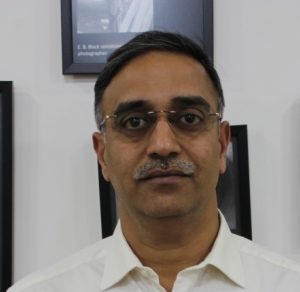

A microgrid is typically defined as a group of interconnected loads and distributed energy resources, within defined electrical boundaries, that act as a single controllable entity with respect to the grid. Microgrids can function either independently or as part of the macrogrid. This article by Tom Christensen and Sachin Deole takes a closer look at how solar-based microgrids can help electrify remote Indian villages where conventional power grids are highly infeasible.
When the lights came on in Leisang, Manipur – the last village to be electrified – Deendayal Upadhyay Gram Jyoti Yojana was deemed to have succeeded. The fact that not every home has a power connection nor continuous power supply, should not detract from this major achievement.
The primary contribution of microgrids to this prodigious undertaking has been to provide power to the remotest and most inaccessible communities, which would have been too impractical or expensive to connect via conventional transmission lines.
A microgrid is typically defined as a group of interconnected loads and distributed energy resources, within defined electrical boundaries, that act as a single controllable entity with respect to the grid. Microgrids can function either independently or as part of the macrogrid. The most common source of power for India’s rural microgrids is solar.
Although grid connectivity is the mainstay for many rural electrification programmes, some states are considering extending the role of microgrids beyond the electrification of the most difficult to reach communities. By official definition, a village is electrified if 10 per cent of homes have a power connection, which means that in many electrified villages there remains the scope to increase the number of connected homes, and the reliability of supply. Microgrids offer the potential to achieve this.
With battery storage, solar microgrids offer performance comparable, or better than many rural grid connections. This is especially applicable in instances where extending the grid will create power losses as transmission and distribution distances are increased. In addition, although it is possible to steal energy from a microgrid, theft from a microgrid is easier to detect, especially if smart meters are installed.
Analysis in 2018 by IL&FS’ Gaurav Bhatiani and Harsha Meenawat, for the India Consensus Project, found solar microgrids to be relatively expensive. Providing Bikaner district in Rajasthan with power from solar micro-grids was estimated at around Rs.11,350 crore. The figure, which took operations and maintenance and battery replacement into account, found capital expenditure accounted for most of the cost.
The total cost of providing Bikaner with electricity access using diesel microgrids was estimated at around Rs.2,720 crore, with the biggest cost being the diesel fuel. Solar microgrids, however, support the government’s goal of 100 GW of solar energy generation by 2022, reduce carbon emissions, and help lessen India’s reliance on petroleum imports. In addition, unlike the diesel microgrid, there is no ongoing cost for fuel. It should also be noted that the cost of both solar panels and battery storage systems is falling rapidly. As the World Economic Forum recently reported India is producing the cheapest solar power in the world.
The resilience of solar microgrids, which rely on a single intermittent source of power, can be enhanced through the creation of hybrid microgrids which incorporate wind turbines. Combining dual sources of power with battery storage enables a more reliable and consistent output. Where a microgrid is augmenting a macrogrid supply, the addition of a smart power management system can assist efficient grid management through real-time monitoring of ramps, peak shifting and matching of load and generation profiles.
The flexibility of microgrids – either solar or hybrid – to function either independently or as part of the macrogrid means their potential is not limited to rural electrification programmes.
In order to ensure a reliable power supply India’s commercial and industrial user are building microgrids at an even faster pace and scale than rural communities. Nowhere is the potential more evident than in India’s nascent data centre sector.
Investment in Indian data centres is projected to reach $7 billion in the next three years. Uninterrupted service is at the heart of successful data centre operation. To provide uninterrupted, reliable services data centres require uninterrupted, reliable sources of power.

It is not uncommon for data centres to have captive microgrid power supplies incorporating multiple sources of renewable power – wind and solar for instance – coupled to battery storage and augmented by conventional power generation – often fuelled with natural gas.
Along with resilience, microgrids can offer commercial and industrial users potential revenue streams as utilities may pay major users to reduce loads and peak times and will buy surplus power generated or stored by the microgrid.
The Smart Cities Mission envisages solar energy, including rooftop solar, playing a leading role in providing energy for new and revitalised urban centres. Renewable energy generally and especially distributed generation such as rooftop solar, can have a profound impact on daily demand curves. Creating solar microgrids, incorporating battery storage and smart distribution automation, represent another way in which microgrid technology can support urban as well as rural development.
Some view microgrids as a stopgap solution until a fully functional national grid is established. With the trend globally moving towards distributed generation, however, India’s use of grid-connected microgrids can be seen as potentially trailblazing, establishing permanent and complementary distributed additions to the central grid.
About the authors: Tom Christensen is Vice President, Asia Power Transmission and Distributed Energy, Black & Veatch; Sachin Deole is Director, Business Development – Power, Black & Veatch India.



